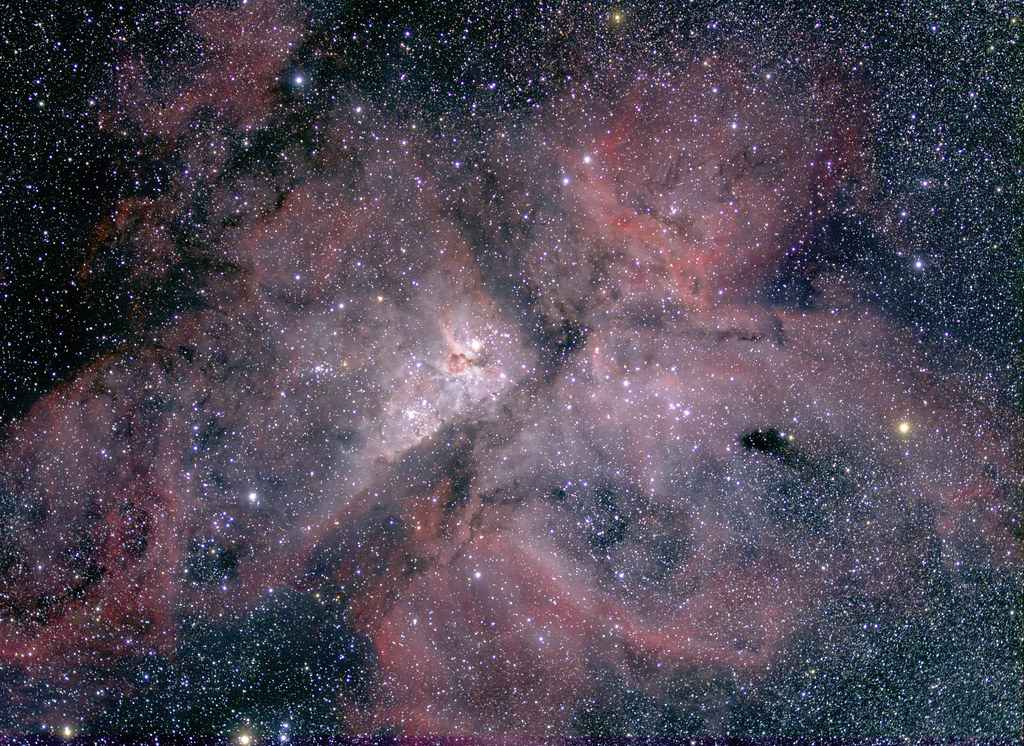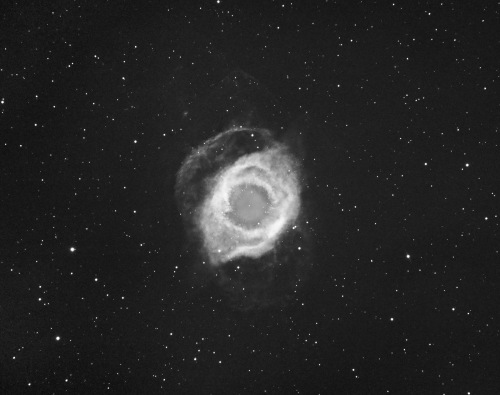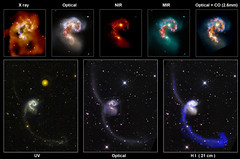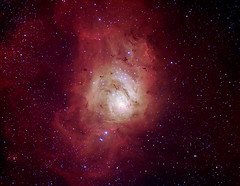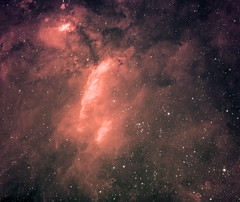Although we are “enjoying” the Christmas break, today I’ve been contacted (thanks to Rami Mandow @CosmicRami) by Kelsie Iorio, an ABC News Digital journalist who was preparing an article about the situation of the red supergiant Betelgeuse.
The article published in ABC News, entitled “Is Betelgeuse, the red giant star in the constellation Orion, going to explode?“, can be found in this link. It includes comments from Rami Mandow, Associate Professor Michael Brown from Monash University’s School of Physics and Astronomy and myself, with some other tweets from several astrophysicists who are talking about the “mysterious dimming of Betelgeuse“.

The red supergiant star Betelgeuse in Orion was the very first star after the Sun we got a direct image of its surface. That is because it is a huge star: if it were where the Sun is its outer layers will reach the orbit of Jupiter! This image was taken with the Hubble Space Telescope in 1995. More info in the APOD (Astronomy Picture of the Day) on April 19th, 1998. Credit: A. Dupree (CfA), R. Gilliland (STScI), FOC, HST, NASA.
But I want to share with you my full interview here, and keep it for my records, so here it goes.
The Betelgeuse hype
Interviewer: Kelsie Iorio (ABC News Digital )
Interviewee: Ángel R. López-Sánchez (AAO-MQ)
Q: For those who don’t know, what is Betelgeuse and what is it doing at the moment that’s out of the ordinary?
Betelgeuse is a bright star in the famous constellation of Orion the Hunter. It is a red supergiant star, meaning that it is star that is much more massive than our Sun (10 – 15 times) and that is already in the latest stages of its live. The star will eventually explode as a (type II) supernova. We astrophysicists know this will happen “soon”, but “soon” in Astronomy means 100 thousands years or perhaps even more.
During the last month observers worldwide have measured a dimming in the brightness of Betelgeuse.
This is actually completely ordinary, as it is well known and documented that Betelgeuse is a variable star (that means that it’s periodically changing its brightness).
Social media has again played a role here with the “hype” of the brightness of Betelgeuse: it is a normal situation that is happening at the moment and we can explain the dimming of Betelgeuse in many ways (a small shrinking of its huge size, solar spots, magnetic activity, a combination of factors) without the need of thinking that is going to explode now.
But people have been talking about that and many of them would love to see Betelgeuse explode! (I do not).
Q: Why is the astronomy world so excited about what’s happening?
If Betelgeuse really explodes as a supernova this would be a great opportunity for use to study how massive stars explode and get a better understanding of stellar evolution and stellar interiors. It will create a point-like object as bright as the Moon that would be visible even during the day, that will be fading during months till disappear.
However I must insist: the dimming of the brightness is the typical behaviour of the star. It is periodically changing its brightness and it has had this “low” brightness in the past. Even Aboriginal Australian knew this star changed brightness!
Q: Can we see Betelgeuse from Australia? For people who haven’t seen it or don’t know how to look for it, what does it look like from earth?
Of course! This is a star located very close to the celestial equator, meaning it can be seen essentially from everywhere (just not from the very same South Pole and around). Right now it is clearly visible to the North-East at the beginning of the night. The constellation of Orion is one of the most famous constellations of the sky and can be very easily recognised even by non-experts. Just use a stellar map (there are plenty free in internet, I recommend http://skymaps.com, and also plenty of apps) and you’ll see it. Despite it has noticeable dimmed in the last month, Betelgeuse still is one of the brightests stars in the night sky.
As any other star Betelgeuse is just a point of light, even when using a powerful telescope: stars are very, very, very far away from us to see them like a little disk. Betelgeuse is at a distance of around 700 light years.
Q: What do you think will happen to Betelgeuse next? Is it likely to explode?
No, it is very unlikely we see it exploding. The latest astrophysical research conducted about Betelgeuse clearly shows that it should still have a life of around 100 thousand years. Again, that is almost NOTHING in the cosmic scale, but a lot for us.
As it has done plenty of times in the past, Betelgeuse will eventually gain brightness again and all will be back to usual, continuing being sometimes a bit brighter sometimes a bit dimmer during the rest of all our own lifetimes.
Q: Is what’s happening with Betelgeuse a rare event?
No, it is not a rare event.
There are PLENTY of variable stars in the sky. A nice example is the star Mira in the constellation of Cetus (the Whale). This star sometimes can be easily seen with the naked eye and sometimes it is imposible to see, needing binoculars or telescopes to detect it. And it is not going to explode as supernova!
Q: Do you believe it’s important for the wider public to have a basic knowledge of astronomy and understand what’s happening in situations like this? Why?
I think it is important because everyone loves Astronomy but nowadays it is very easy to be confused because of the mixed bag of content found in social media and the internet.
I could tell the story about why supermoon are NOT a thing, but that is for another time (or read it here: https://angelrls.wordpress.com/2016/11/11/supermoons/)
Article in ABC News: “Is Betelgeuse, the red giant star in the constellation Orion, going to explode?“, Kelsie Iorio, 28th December 2020.


